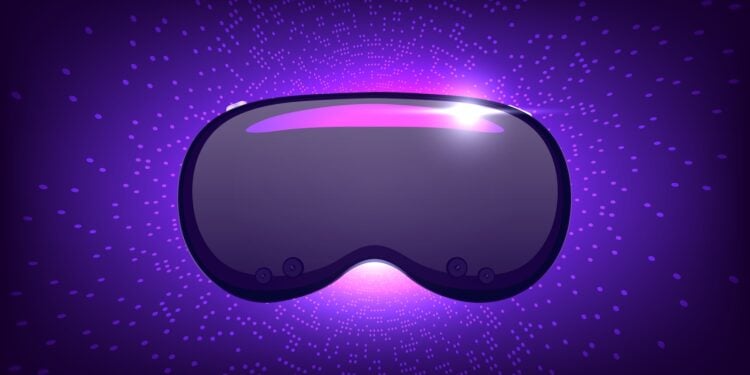With the Vision Pro, Apple has launched a device that pushes many technical boundaries, but also exhibits significant weaknesses. Its high price and uncomfortably heavy weight raise doubts about its suitability for everyday use. For a long time, the Vision Air was considered the solution that would mitigate these problems. But now there are many indications that the Vision Air may never be released – because Apple is focusing on another project.
Since the Vision Pro was unveiled, many have been waiting for a lighter, cheaper version, rumored to be called the Vision Air. Launch dates between 2025 and 2027 were being bandied about, and expectations were high. But a recent report suggests a fundamental shift in Apple's strategy. Instead of investing resources in the Vision Air, the company is said to be accelerating the development of smart glasses to avoid falling further behind Meta. This puts the headset in jeopardy – even before it's even been unveiled.
The problems with Vision Pro
The Vision Pro is a technological masterpiece in many ways. The headset combines razor-sharp displays, eye-tracking, and seamless integration into the Apple ecosystem. However, it has two critical weaknesses. The price of over €3,999 makes the Vision Pro unaffordable for most. This means it costs more than a powerful MacBook Pro, but offers only limited functionality in comparison. The weight is another issue. Users complain of pressure points and discomfort after just a short period of time.
What Vision Air should change
Vision Air was seen as a solution to both weaknesses. The price was targeted at $1,500 to $2,000—still expensive, but significantly more attractive than the Vision Pro. To save weight, Apple was to forego the EyeSight feature, which has so far received little traction. Less metal in the casing was also planned, which would make the headset lighter and more comfortable. Slight technical compromises were planned, such as lower-resolution displays. However, this would have been more than sufficient for most applications. Vision Air sounded like an attempt to make Vision Pro technology accessible to a wider audience.
Apple's change of course towards glasses
A recent report now questions these plans. Apple has internally decided to divert resources from the Vision Air project – codenamed N100 – and instead focus more on developing smart glasses. The reason is growing competition from Meta, which is making faster progress with its eyeglass products. Apple doesn't want to be left behind and is therefore accelerating work on its own model.
Delay with consequences
Vision Air was originally planned for 2027 at the earliest. With the departure of employees, this goal is now a distant prospect. Worse still: the delay could mean that Vision Air will never reach market. Apple has had a clear goal for years: smart glasses that function as everyday products and replace headsets like the Vision Pro in the long term. From the beginning, Vision Pro was only an interim step to create the basis for Apple glasses. But if smart glasses become mass-marketable by 2028, Vision Air could already seem outdated upon release. A bulky headset would then have little chance of competing with lightweight glasses that stream movies from iPhones or serve as a multi-monitor for MacBooks.
Declining demand for headsets
It's already clear that many potential Vision Air buyers would find little benefit. Most already own an iPhone and a MacBook. Glasses that combine both and display content flexibly would be a more logical choice. An additional, expensive headset doesn't offer any significant added value in this scenario.
Apple between headset and smart glasses
Apple is at a crucial point with its mixed reality strategy. Vision Air was intended to address the weaknesses of Vision Pro and appeal to a broader audience. But by prioritizing smart glasses, the balance of power within the product line is shifting. The key question is whether Vision Air can still be relevant. If smart glasses perform the same tasks—playing movies from iPhones, simulating multiple MacBook monitors, being lightweight and comfortable for everyday use—a heavy headset loses its relevance. This could mean that Vision Air has already failed before it's even launched. The best products for you: Our Amazon storefront offers a wide selection of accessories, including those for HomeKit. (Image: Shutterstock / WindAwake)
- Apple Vision Pro: FCC confirms revised headset
- Apple announces new immersive content for Apple Vision Pro
- Apple Vision Pro: R2 chip should significantly increase performance





